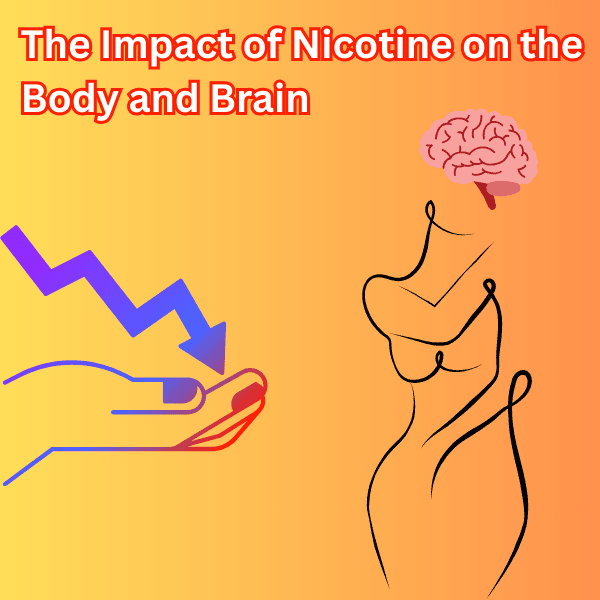Nicotine is incredibly important in a lot of ecosystems, a chemical that plays a large role in humanities ecosystem as well, whether its directly or indirectly. So naturally it should be an important topic for us to be educated on, as it also has some fascinating branches of information and key uses.
The chemical compound that is nicotine
An alkaloid (C₁₀H₁₄N₂).

Found naturally in tobacco leaves (commonly known), as well as tomatoes, potatoes, eggplants and green peppers (all a part of the nightshade family). For the less well-known consumables you find on your dinner plate containing nicotine, you would have to eat hundreds of kilograms to equal one cigarette.
These nightshade family plants produce nicotine as a bug repellent. First synthesized in their roots and then carried to their leaves where bugs regularly feed. To a bug the nicotine targets the nervous system, overstimulating certain receptors and leading to their death.
How is nicotine made for vapes
There are two ways in which this is done:

Traditional extraction from tobacco:
Most nicotine you find in vapes are made from this process. They start by soaking the tobacco leaves in a solvent (usually ethanol or ammonia) which separates the nicotine. Then it’s purified into nic salts or freebase nicotine which they use in vapes. A common method thanks to tobaccos high nicotine content.
Synthetic nicotine (Lab-Made):
Also called TFN (tobacco free nicotine), an expensive and uncommon way to make nicotine. A niche market that caters for very little of the vape juices out there. Simply produced in a lab that takes other chemicals to build the nicotine chemical (C₁₀H₁₄N₂) in a lab.
Body consumption methods and effects by dosage

-
Inhalation (smoking/vaping).
-
Absorption through oral products (gum, patches, snus, pouches).
-
Speed of delivery: why smoking/vaping hits faster than other methods.
Dosages:
-
Low dosage (≈ 0.5–1 mg nicotine, about 1 light cigarette)
-> Mild stimulation, slight mood lift, increased alertness, and a gentle rise in heart rate. -
Moderate dosage (≈ 2–3 mg nicotine, about 3–4 light cigarettes)
-> Noticeable cardiovascular effects (faster heartbeat, increased blood pressure), stronger dopamine release leading to focus, calm, or pleasure. -
High dosage (≈ 5+ mg nicotine, about 7+ light cigarettes in a short time)
-> Can cause nausea, dizziness, sweating, and even short-term nicotine poisoning symptoms if taken too quickly.
As a regular user would know, this all depends on your body’s tolerance towards the nicotine chemical. A pack a day smoker of a medium – heavy cigarette, won’t feel much when smoking at all. Whereas a nonsmoker might just pass out from having that many cigarettes a day.
Effects on the brain by dosage
-
Low dosage (≈ 0.5 mg nicotine, ~1 pull of a 3% vape)
-> Improved focus, mild mood boost, and light stimulation of reward pathways. -
Moderate dosage (≈ 2–3 mg nicotine, ~5–7 pulls of a 3% vape within a short period)
-> Stronger dopamine and serotonin release, reinforcing the pleasure/reward loop that builds habit and dependence. -
High dosage (≈ 5+ mg nicotine, ~12–15 pulls of a 3% vape in quick succession)
-> Overstimulation of the brain’s receptors, possible anxiety, jitteriness, or triggering of the withdrawal-craving cycle.
Long-term use
The brain adapts by increasing the number of nicotinic receptors. This makes quitting difficult because even after stopping, those receptors remain, demanding stimulation until they reset over weeks to months.
Silent yet significant effects

Suppression of appetite: While nicotine should never be considered a good or healthy weight loss option. Nicotine has been one of the top long-term weight loss drugs in the last century. Studies done on mice show that frequent dosages are more effective in weight loss than high dosages.
Alters sleep quality: A none-smoker might tell you that after using nicotine they feel lethargic or sleepy. While frequent and heavy users will tell you they don’t get enough quality sleep. Nicotine reduces REM and deep sleep, leaving you restless and tired. This disrupts your natural flow of rest.
Affects stress perception: A complex understanding. The actions of smoking nicotine are seen as stress relief by the body and mind, deeper and longer breaths (breathing exercises), release of dopamine (usually felt when having a good time, taking a break from work to go smoke (seen as a opportunity to relax)
The reality is that it increases your heart rate, activates adrenal glands (fight or flight mode), blood pressure rises, and you become short of breath (a sign of the body being exhausted)
Conclusion
Nicotine is not good or bad, it is complex. With an array of medical uses and a long history of abuse. A product that’s best to understand fully before using it. With so many ways of consuming this product, being aware of your dosages is incredibly important.
Be aware of how it affects you during consumption & long after. There is an internal balance we have that should be protected, mentally and physically. Know your limits and educate those around you who do not know the impact of nicotine on the body and brain.


